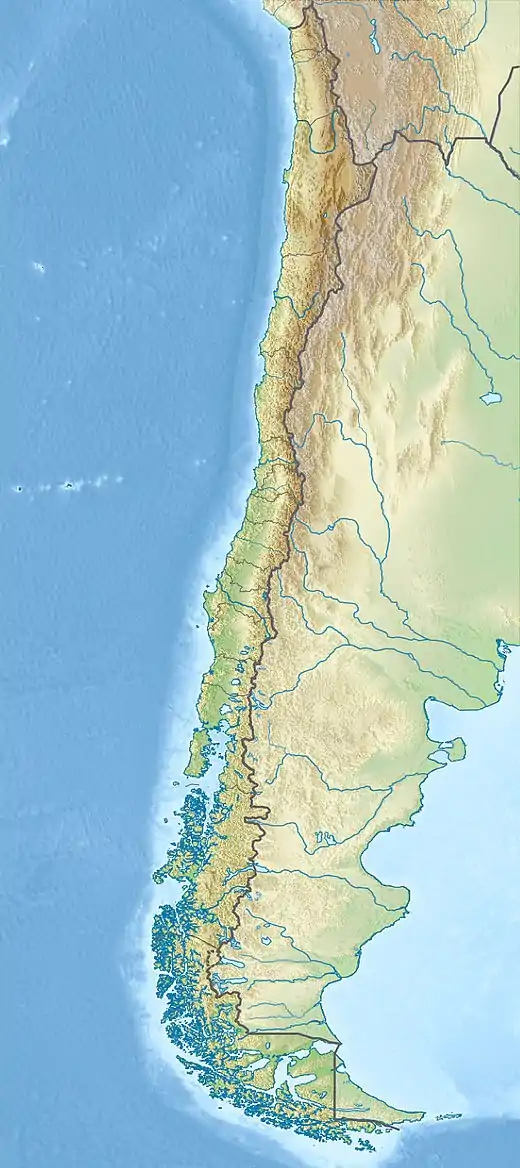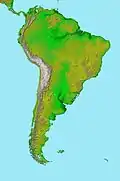Caleta Herradura Formation
Caleta Herradura Formation (Spanish: Formación Caleta Herradura) is a geologic formation of Late Miocene (Montehermosan) age, cropping out on the Mejillones Peninsula in northern Chile. The erosion at the Coastal Cliff of northern Chile have created particularly good exposures of Caleta Herradura Formation. The formation deposited in a half graben within Mejillones Peninsula. The formation rests nonconformably on the Jorgino Formation.[1]
| Caleta Herradura Formation Stratigraphic range: Late Miocene-Pliocene (Montehermosan) | |
|---|---|
| Type | Geological formation |
| Underlies | La Portada Formation |
| Overlies | Jorgino Formation |
| Thickness | 380 m (1,250 ft) |
| Lithology | |
| Primary | Sandstone, sandy mudstone, breccia, conglomerate |
| Other | Diatomite |
| Location | |
| Coordinates | 23.4°S 70.5°W |
| Approximate paleocoordinates | 23.5°S 69.8°W |
| Region | Antofagasta Region |
| Country | |
| Extent | Mejillones Peninsula |
| Type section | |
| Named for | Caleta Herradura Chica |
 Caleta Herradura Formation (Chile) | |
Fossil content
The following fossils have been found in the formation:
| Group | Fossils | Notes |
|---|---|---|
| Mammals | Balaenopteridae indet., Odontoceti indet., Otariidae indet. | |
| Birds | Spheniscus chilensis, Milvago sp., Phalacrocorax sp. | |
| Fish | Carcharodon carcharias, Carcharias sp., Carcharhinus sp., Chondrichthyes indet., Myliobatidae indet. | |
References
- Di Celma, Claudio; Cantalamessa, Gino (2007). "Sedimentology and high-frequency sequence stratigraphy of a forearc extensional basin: The Miocene Caleta Herradura Formation, Mejillones Peninsula, northern Chile". Sedimentary Geology. 198 (1–2): 29–52. Bibcode:2007SedG..198...29D. doi:10.1016/j.sedgeo.2006.11.003.
- Cuenca del Tiburón at Fossilworks.org
Further reading
- S. D. Emslie and C. G. Correa. 2003. A new species of penguin (Spheniscidae: Spheniscus) and other birds from the late Pliocene of Chile. Proceedings of the Biological Society of Washington 116(2):308-316
This article is issued from Wikipedia. The text is licensed under Creative Commons - Attribution - Sharealike. Additional terms may apply for the media files.
